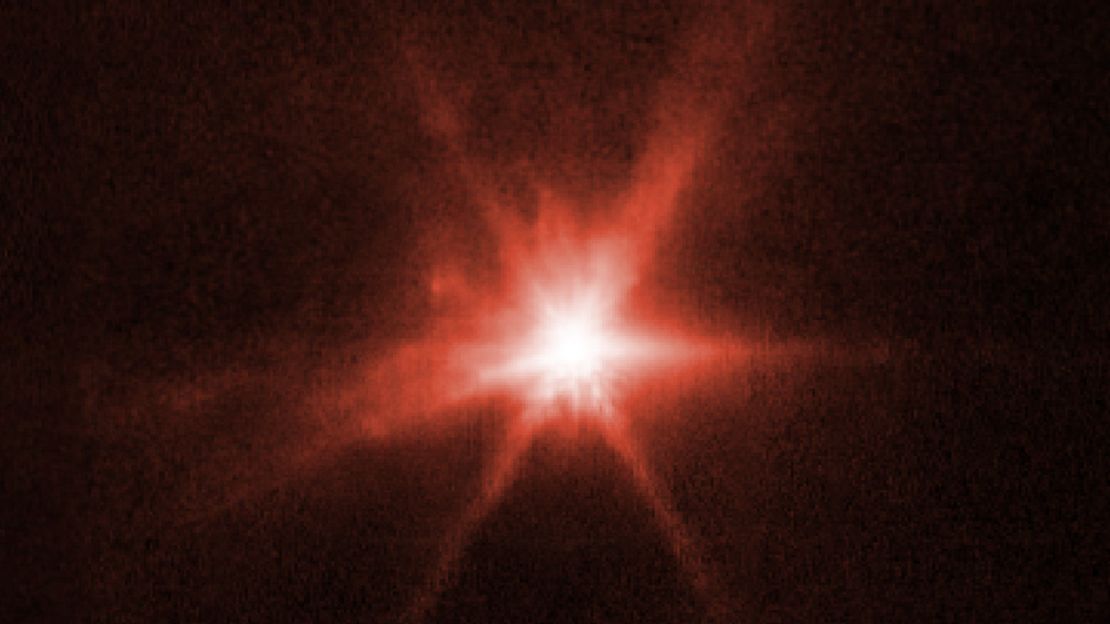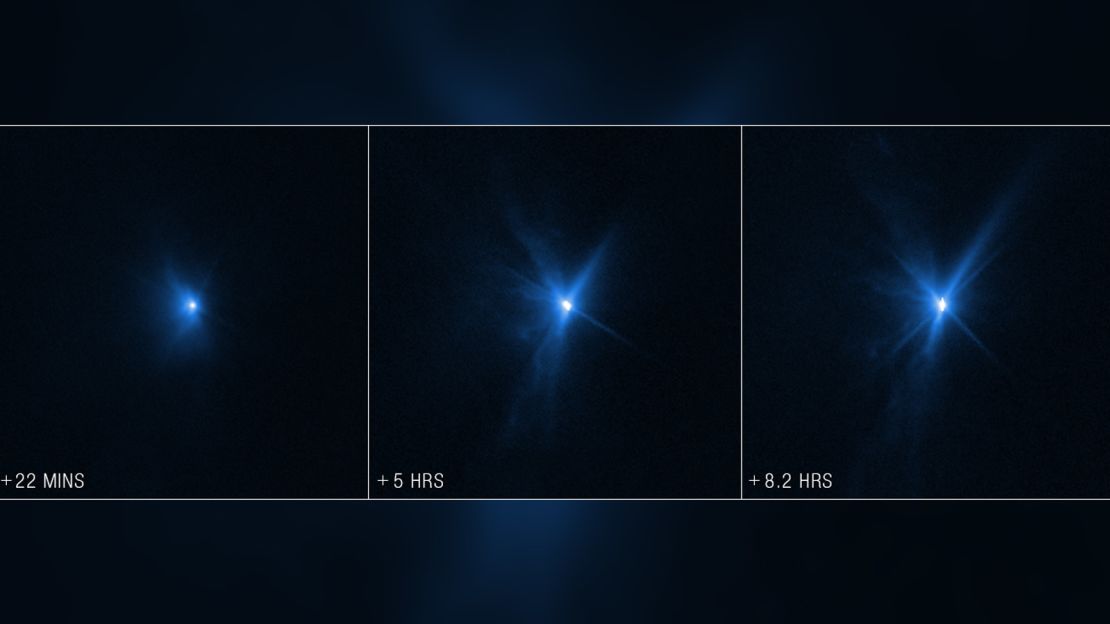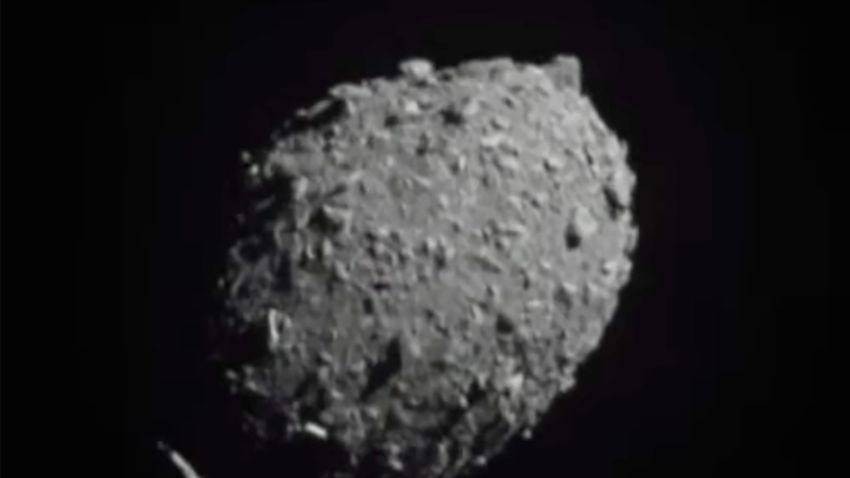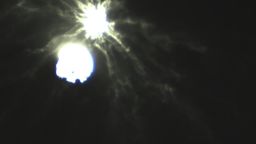Sign up for CNN’s Wonder Theory science newsletter. Explore the universe with news on fascinating discoveries, scientific advancements and more.
Two of the most powerful telescopes in space watched as a NASA spacecraft intentionally slammed into an asteroid this week.
The James Webb Space Telescope and the Hubble Space Telescope captured images of the moment when the Double Asteroid Redirection Test, or DART, spacecraft crashed into Dimorphos on Monday. The images were released on Thursday.
The observatories were both witness to humanity’s first test of asteroid deflection technology. While neither Dimorphos nor Didymos, the larger asteroid it orbits, pose a threat to Earth, the double asteroid system was a perfect target for the DART spacecraft to attempt to change the motion of an asteroid slightly.
The Webb and Hubble images can be used to learn more about the surface of Dimorphos, which had never been seen until these detailed views collected by DART streamed back from the spacecraft on Monday. The telescope observations can also shed light on how much material was released from the asteroid’s surface at the moment of impact and how quickly it was ejected.
Both telescopes view the universe in different wavelengths of light, which can show if the cloud of material was just full of dust or included larger chunks of rock.

Scientists will use observations from Webb and Hubble, along with ground-based telescopes, to determine if DART successfully altered the motion of the asteroid.
The Webb telescope wasn’t designed to track speedy asteroids, but the observatory’s team was able to lock onto Dimorphos and capture 10 images of the asteroid. Webb’s Near-Infrared Camera was used to spy wispy plumes of material drifting away from the point of impact. More of Webb’s instruments will observe the asteroid in the future to reveal additional information about its composition.
Hubble observed Dimorphos with its Wide Field Camera 3 before the impact as well as 15 minutes after the collision to watch things unfold in visible light. The observatory captured 45 images.

Material sprayed up by the impact looks like rays releasing from the asteroid. The most obvious spike to the left is where DART hit the asteroid. But astronomers noticed that some of the rays seem slightly curved, and they want to study them to determine why.
Didymos appeared to brighten threefold after the impact and remained steady even eight hours later, based on what Hubble captured.
Hubble will continue to keep an eye on Dimorphos over the next three weeks to see how the plume expands and dissipates over time.
On Tuesday, the first images were released from ground-based telescopes and Italy’s LICIACube, a shoebox-size satellite, that followed the DART mission.
Together, the data from so many different vantage points of the collision will inform another mission intending to head to the impact site.
In 2024, the European Space Agency’s Hera mission will launch to study the double asteroid system in great detail.
“We’ve been looking forward to the DART impact for over 17 years, and it’s so exciting to see it through the eyes of the greatest space observatories Webb and Hubble,” said Ian Carnelli, Hera mission manager, in a statement. “These images provide us with clues of what happened in the first hours after impact, and clearly there is much more happening than we had foreseen.”




